|
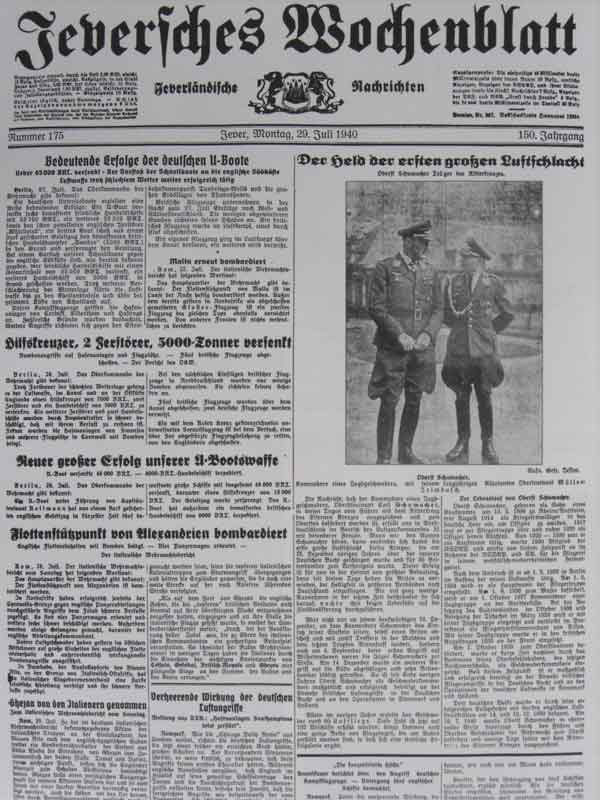
Picture: Oberst Schumacher, Kommodore of a fighter wing seen here together with his Adjutant of long standing, Oberleutnant Müller-Trimbusch
We pass it every time we enter or leave the station and some of us have even lived here during their stay at Jever - The Schumacherstr.
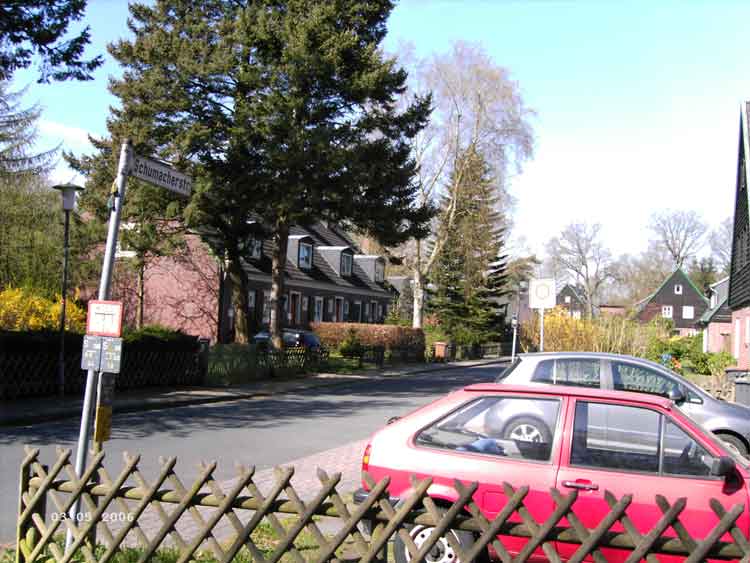
The start of the Married Quarters in Schumacherstrasse.
Obviously the name Schumacher is a German surname, but how many of us know who he was? The following newspaper article can help us to answer this question.
(Published less than a year after the outbreak of WWII this understandably contains a certain amount of propagada and as seen today the claimed victories were certainly much less than quoted here.)
Translation of Jeversches Wochenblatt from 29 July 1940 above.
Hero of the First Large Air Battle
Oberst Schumacher holder of the Knight's Cross
News that the Kommodore of a fighter wing, Oberstleutnant Carl Schumacher has been awarded the Knight's Cross of the Iron Cross and promoted to Oberst by the Führer has been received with great pleasure here in Northern Germany and in the XI Air Group. When we hear the name Schumacher we link this with the first large air battle of the war which was fought over the German Bight on the 18th. December of last year and in which 36 British bombers were shot down. For all of us here at home this was of significant importance because since that day the British have avoided flying into Germany in large formations during daylight hours. Apart from a few exceptions they have confined their cowardly raids on the civil population to nights.
Not only on that memorable 18th. of December, in the course of which Kommodore Schumacher as leader of a fighter wing himself shot down one British aircraft and with 12 hits to his own aircraft managed to land on the last remaining reserve of fuel, but also on the 4th. December when the first air attacks on Wilhelmshaven took place, Schumacher's fighters were also present. On the 14th. of December further air attacks were repelled with the result that 10 British bombers were severly hit. Since the end of last year Oberst Schumacher as Kommodore of the wing has dicisively and successfully participated in the defence against British air attacks over the German Bight as well as in operations in Denmark and Holland.
Last year alone the wing has scored approx. 60 air victories. This number has now increased to 102 victories and which to this number one can add a whole row of aircraft that have been destroyed on the ground so that this would amount to a magnificent series of successes.
CV of Oberst Schumacher
Oberst Schumacher was born on 19.2.1896. as son of a businessman in Rheine, Westfalen. Joined the German Army as a volunteer in August 1914 to become an officer. Transfered to the Flying Branch in 1917 and retired as an officer in 1920. Took up an occupation as a businessman in 1920 - 1930 and joined the NSDAP (National Socialist German Worker's Party) in 1930. From this point on was engaged in the aviation branch of the NSDAP and SA (Storm Troops) in his home district of Westfalen-Lower Rheine.
After the radical change on the 1.3.1933. was active in the build up of the new Luftwaffe in Berlin. Enlisted as Hauptman in the Flying Branch of the Luftwaffe on 1.5.1934. Promoted to Major on 1.8.1936.,and was from 1st. October 1937 Kommandeur of a fighter gruppe on the North Sea Coast. With his fighter gruppe took part in the annexation of the Sudetenland in October 1938 and Czechoslovakia in March 1939, then remained in the Protectorate as Station Commander of Pilzen. Together with his fighter gruppe took on front line duties in the critical days in August 1939.
Promoted to Oberstleutnant on 1st. October 1939 and a short time later was appointed Geschwaderkommodore by his Commander in Chief, the present Reichsmarschall. From this point on is dicisively and successfully engaged in warding off British air attacks in the German Bight as well as by German operations in Denmark and Holland.
He is known to the German people for his successful air battles against the strong British air strikes carried out on the 14th. and 18th. December 1939. On 19.1.1940. Oberst Schumacher was honoured by the Führer and Commander in Chief of the Wehrmacht and promoted to Oberst which a few days later was followed by the award of the Knight's Cross of the Iron Cross.
"Edertstrasse"
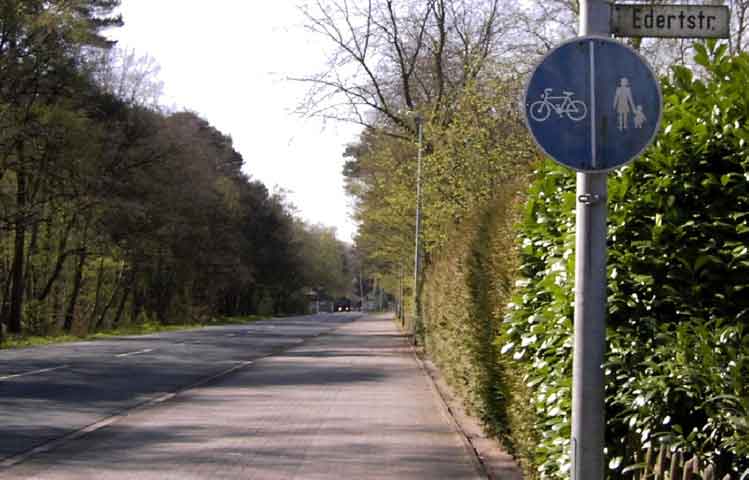
The main camp gates from the end of Edertstrasse
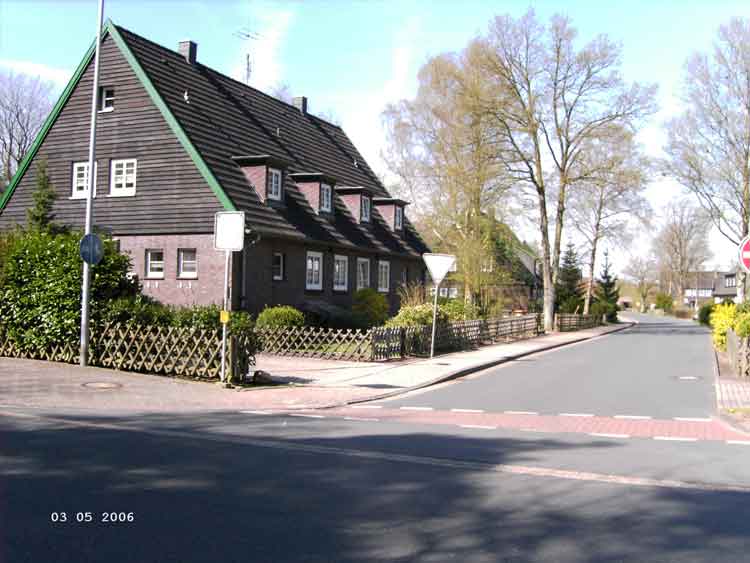
The end of Edertstrasse at the main camp road.
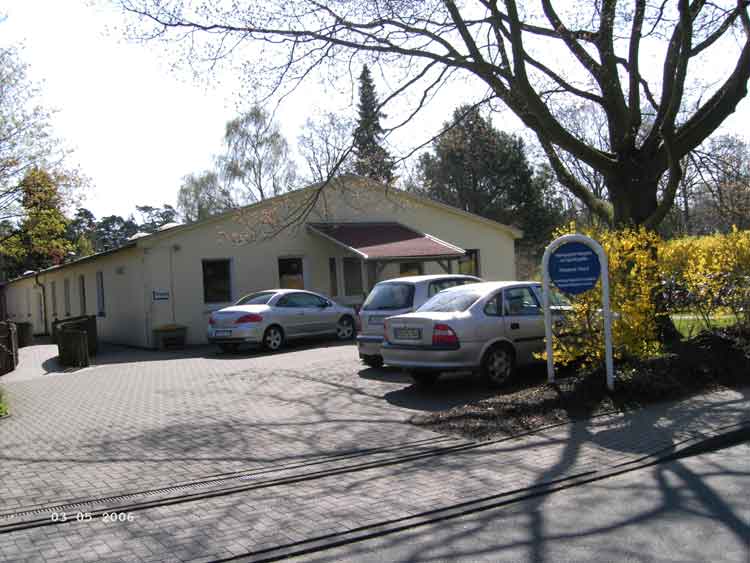
The Old NAAFIhalf-way down Edertstrasse. Today this building is a kindergarten for handicapped children and is supported in many ways
by personel from the station.
One further road will be found in the Station MQs Area at Jever which is quite often over looked - the Edertstr. This is named after Major Hermann Edert, who was Kommandeur of a fighter gruppe and Station Commander of Jever in 1936/37.
(Thanks to Maurice Parker)
|
|








